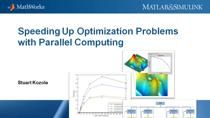Using Deep Learning and Kalman Filters for Temperature Soft Sensing
Bruno Dandine, Poclain Hydraulics
See how to leverage AI to assess internal temperatures of hydraulic motors. The aim was to create an embedded algorithm for temperature estimation based on the motor loads and environment. The challenges were to consider the load history, and generate data using a single internal tool, with fewer measurements and less prior data available. The size of the AI model was also important. MATLAB® enabled Poclain Hydraulics to use pretrained AI models and quickly ramp up their expertise in deep learning, deal with load history issues, and accelerate the project. The benefits of this project will be preventing field catastrophic failures due to prolonged time at unexpected high loads and improving the size of the overall hydraulic transmission.
Published: 3 May 2023




